Patterns of failure in modern auth Dan “ phrawzty ” Maher
Slide 1

Slide 2
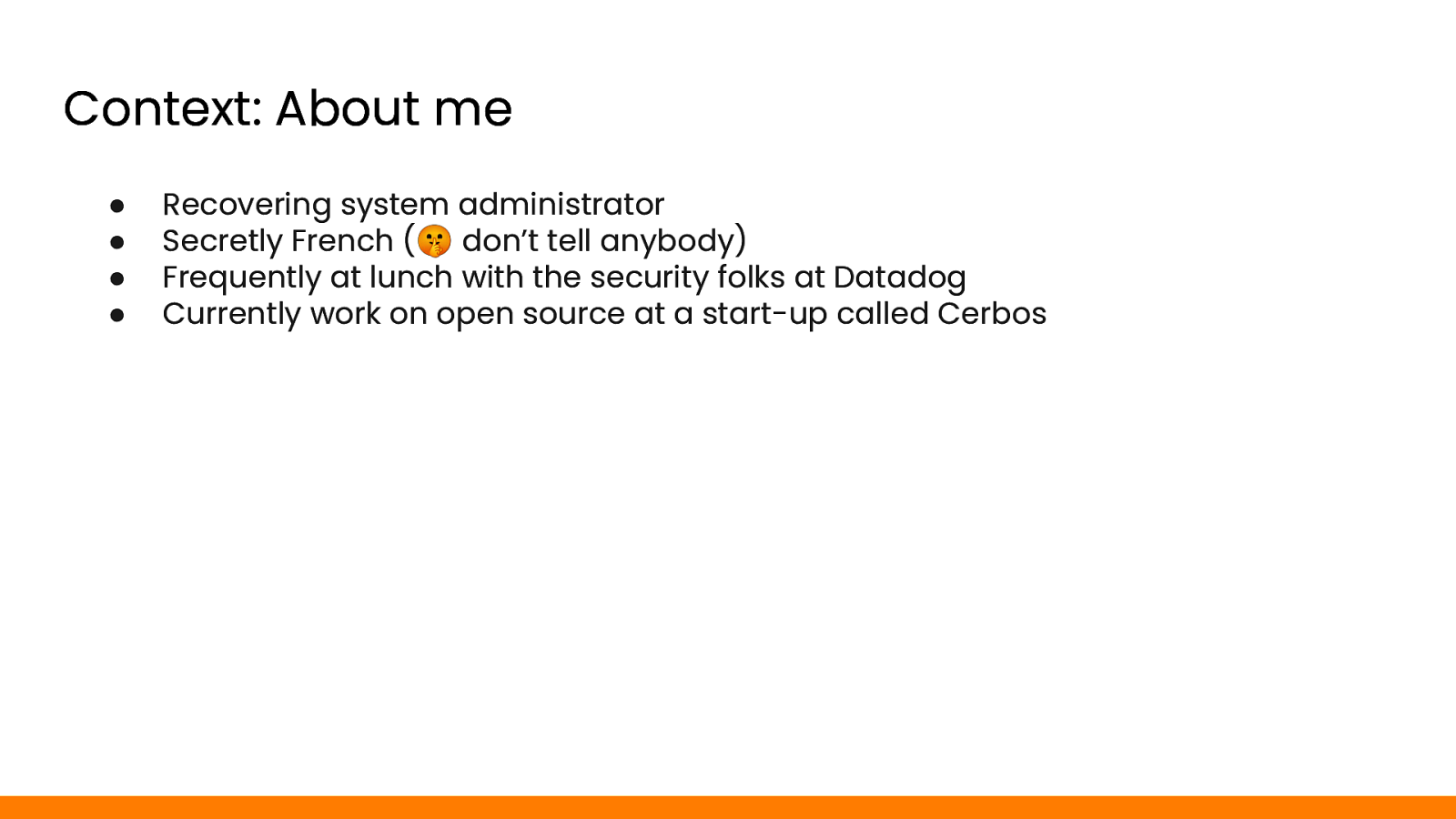
Context: About me ● ● ● ● Recovering system administrator Secretly French (🤫 don’t tell anybody) Frequently at lunch with the security folks at Datadog Currently work on open source at a start-up called Cerbos
Slide 3
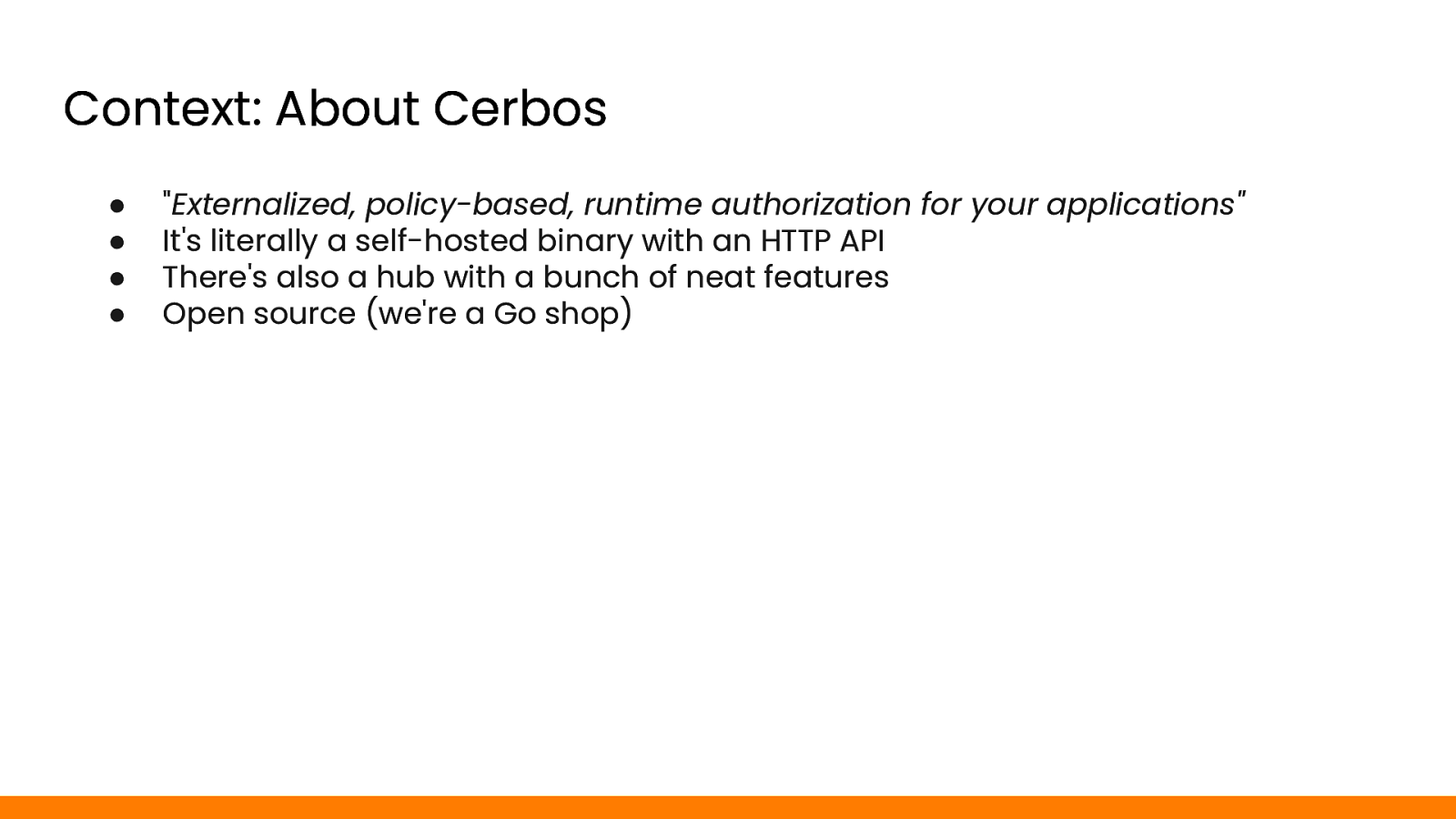
Context: About Cerbos ● ● ● ● “Externalized, policy-based, runtime authorization for your applications” It’s literally a self-hosted binary with an HTTP API There’s also a hub with a bunch of neat features Open source (we’re a Go shop)
Slide 4

What is authorization?
Slide 5
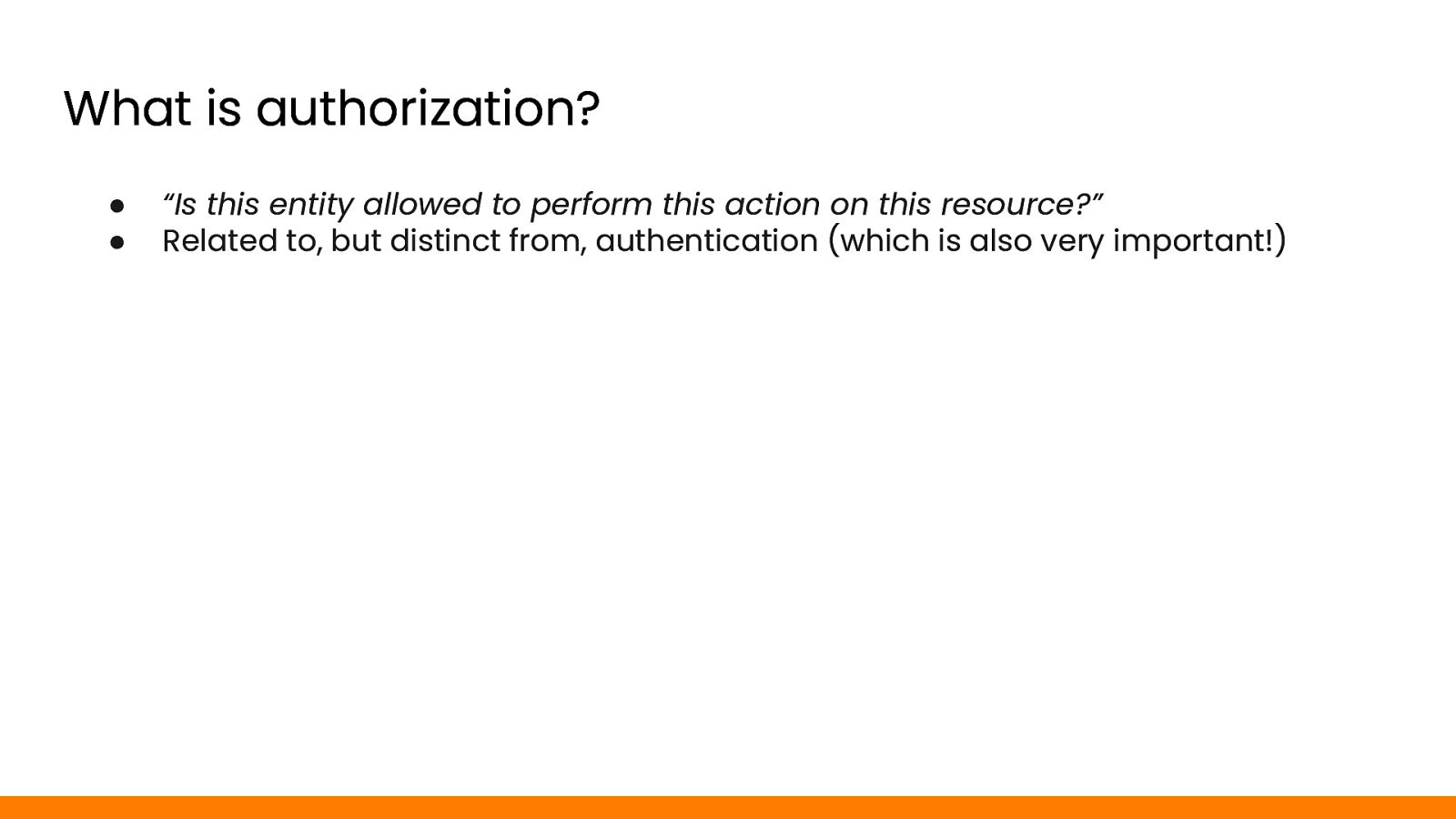
What is authorization? ● ● “Is this entity allowed to perform this action on this resource?” Related to, but distinct from, authentication (which is also very important!)
Slide 6
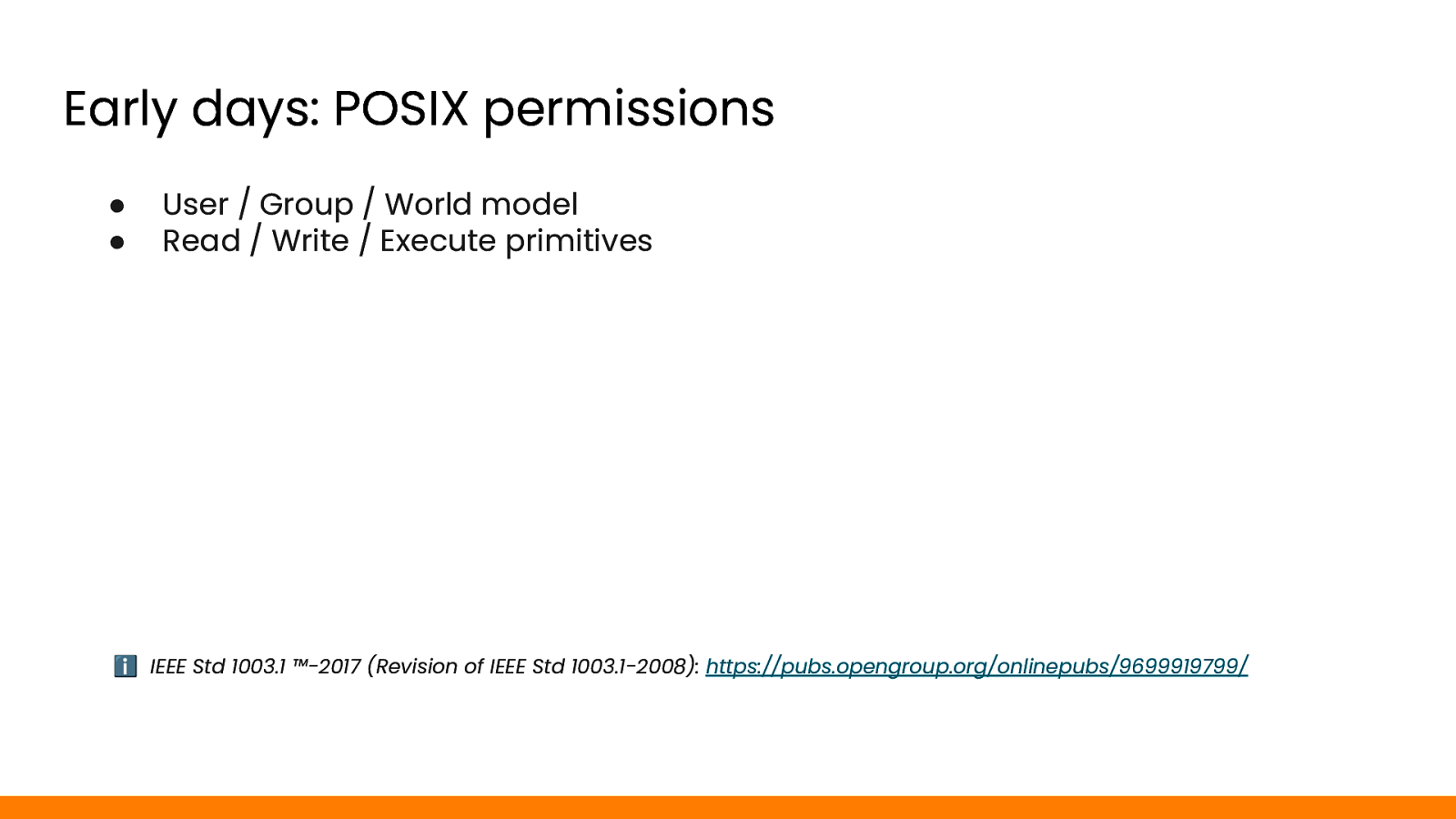
Early days: POSIX permissions ● ● User / Group / World model Read / Write / Execute primitives ℹ IEEE Std 1003.1 ™-2017 (Revision of IEEE Std 1003.1-2008): https://pubs.opengroup.org/onlinepubs/9699919799/
Slide 7

The middle ages: ACLS & RBAC ● ● Access Control Lists Role-Based Access Control ℹ Rationale for the RBAC96 family of access control models: https://dl.acm.org/doi/10.1145/270152.270167 ℹ Proposed NIST standard for role-based access control: https://dl.acm.org/doi/10.1145/501978.501980
Slide 8
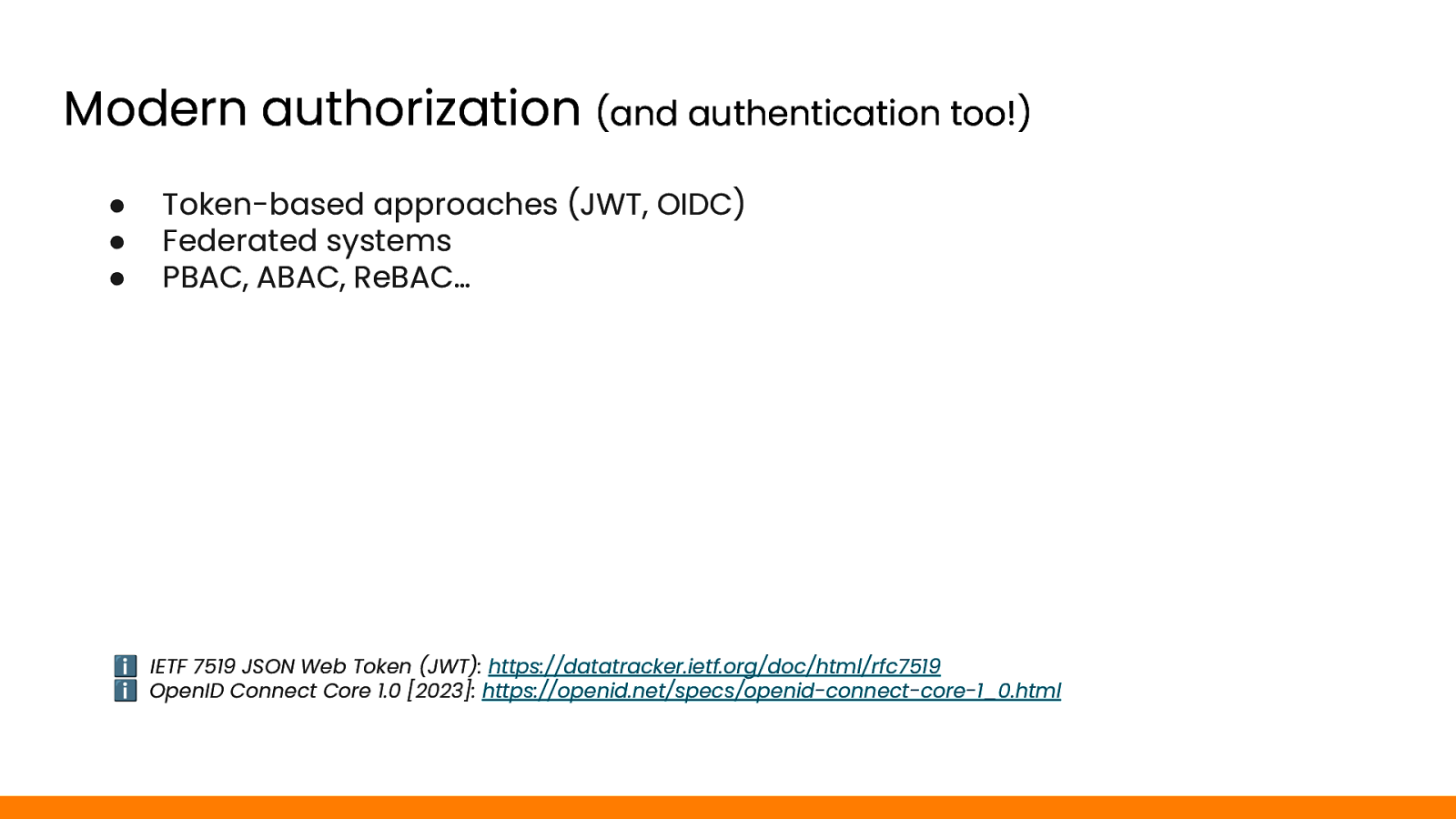
Modern authorization (and authentication too!) ● ● ● Token-based approaches (JWT, OIDC) Federated systems PBAC, ABAC, ReBAC… ℹ IETF 7519 JSON Web Token (JWT): https://datatracker.ietf.org/doc/html/rfc7519 ℹ OpenID Connect Core 1.0 [2023]: https://openid.net/specs/openid-connect-core-1_0.html
Slide 9

When it all goes wrong
Slide 10
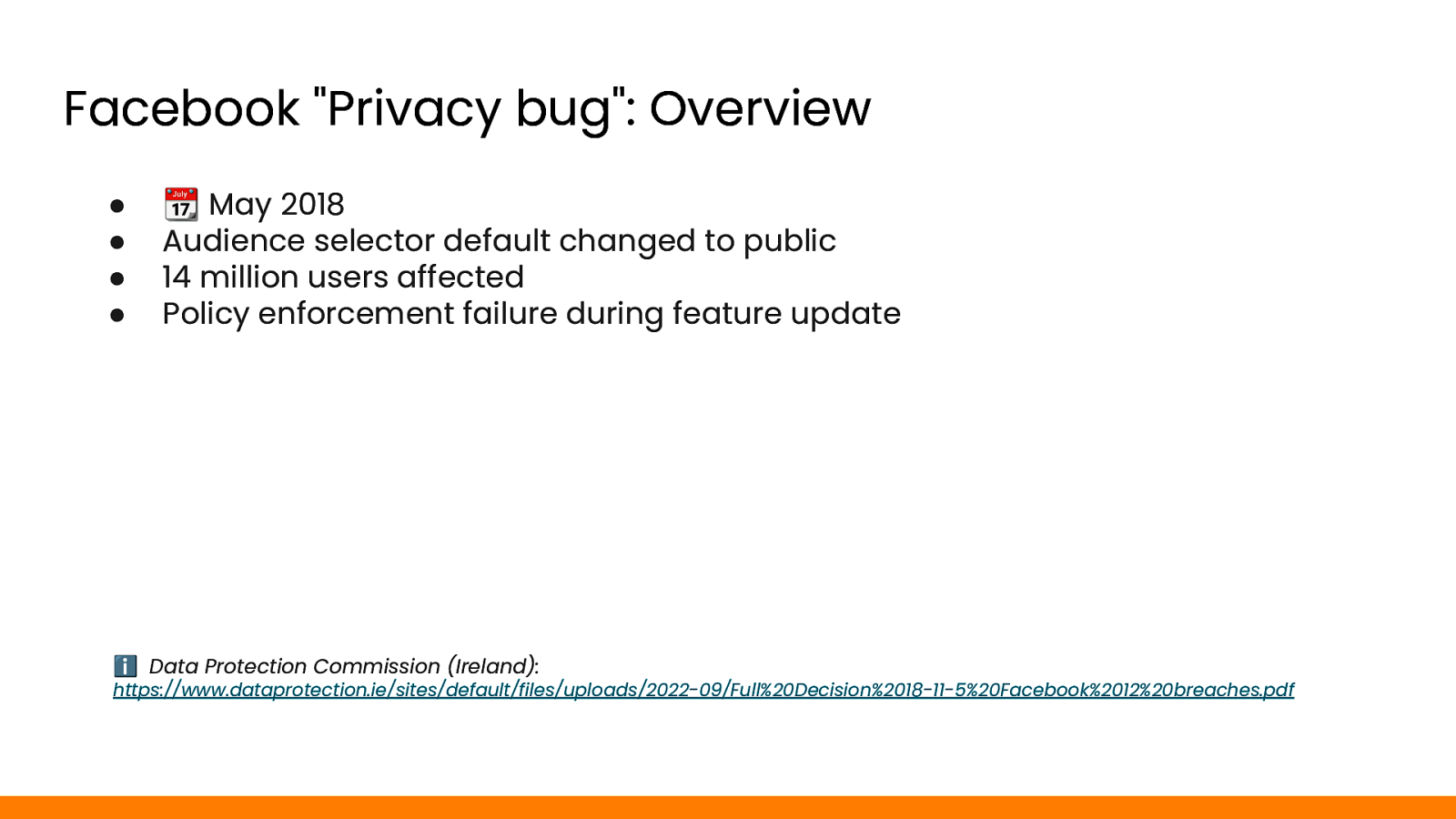
Facebook “Privacy bug”: Overview ● ● ● ● 📆 May 2018 Audience selector default changed to public 14 million users affected Policy enforcement failure during feature update ℹ Data Protection Commission (Ireland): https://www.dataprotection.ie/sites/default/files/uploads/2022-09/Full%20Decision%2018-11-5%20Facebook%2012%20breaches.pdf
Slide 11
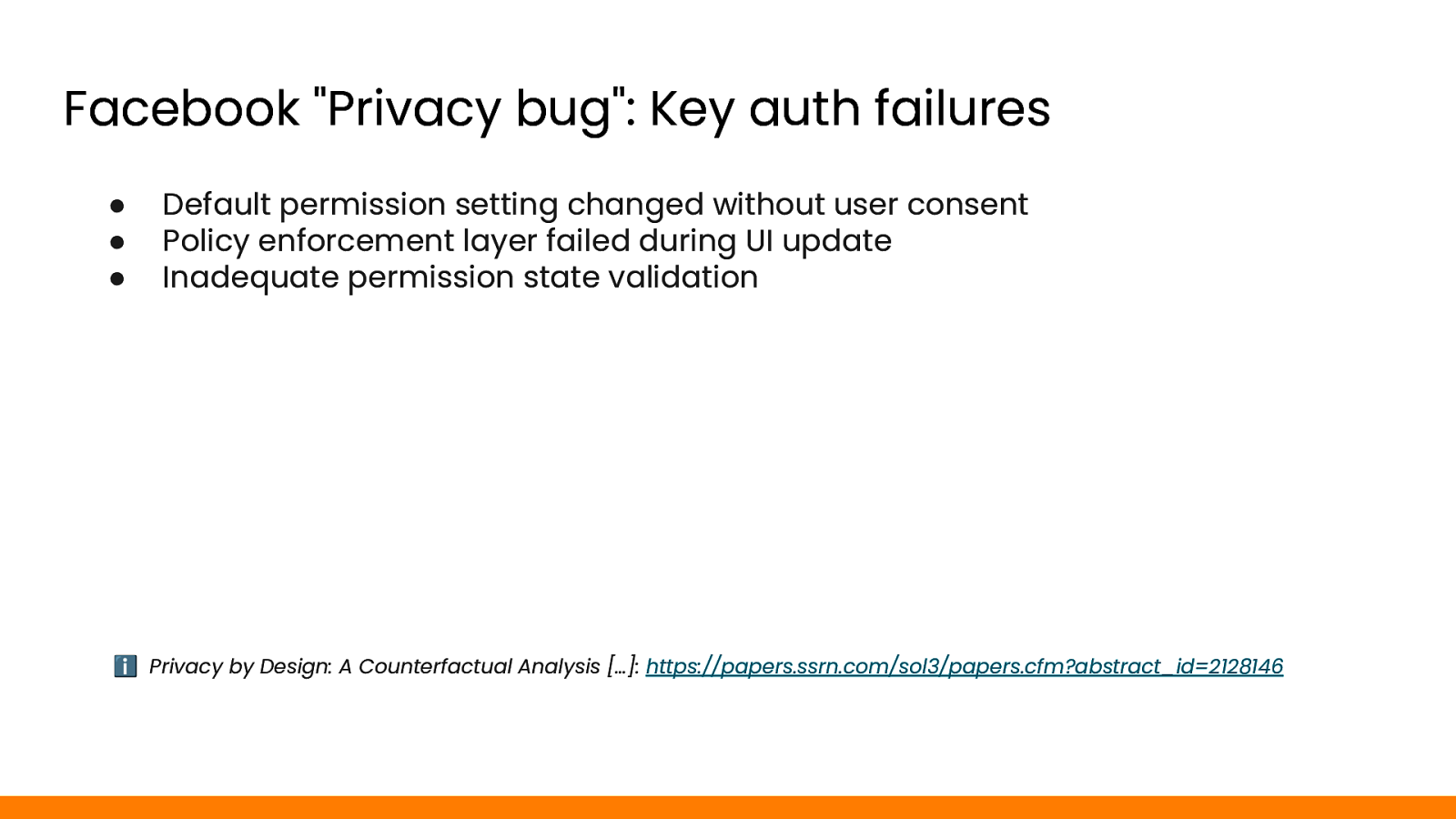
Facebook “Privacy bug”: Key auth failures ● ● ● Default permission setting changed without user consent Policy enforcement layer failed during UI update Inadequate permission state validation ℹ Privacy by Design: A Counterfactual Analysis […]: https://papers.ssrn.com/sol3/papers.cfm?abstract_id=2128146
Slide 12
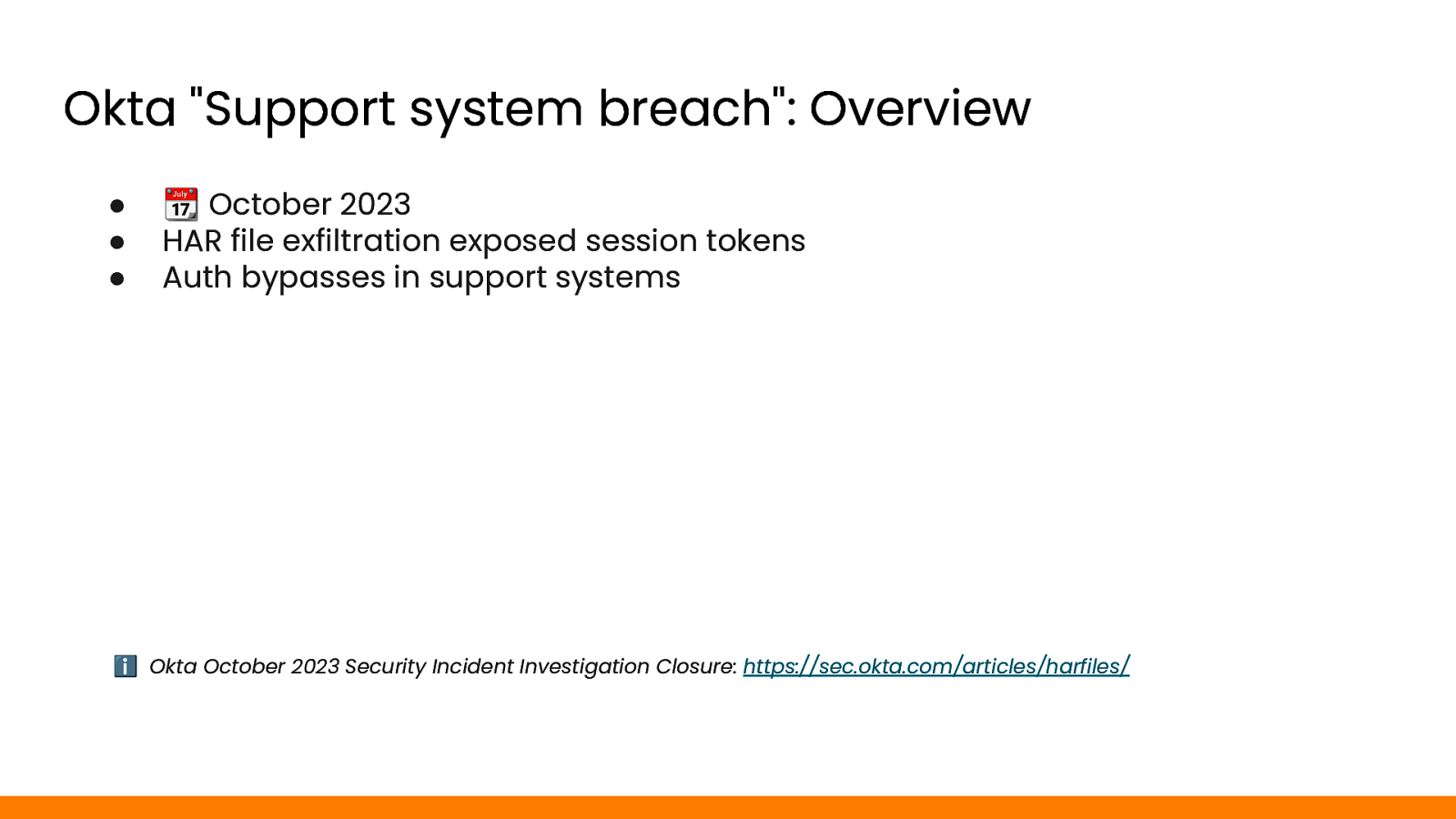
Okta “Support system breach”: Overview ● ● ● 📆 October 2023 HAR file exfiltration exposed session tokens Auth bypasses in support systems ℹ Okta October 2023 Security Incident Investigation Closure: https://sec.okta.com/articles/harfiles/
Slide 13

Okta “Support system breach”: Key auth failures ● ● ● ● Overly permissive access to production Insufficient isolation between support tiers Authorization checks bypassed through session token theft Inadequate token validation controls ℹ BeyondTrust Discovers Breach of Okta Support Unit: https://www.beyondtrust.com/blog/entry/okta-support-unit-breach
Slide 14
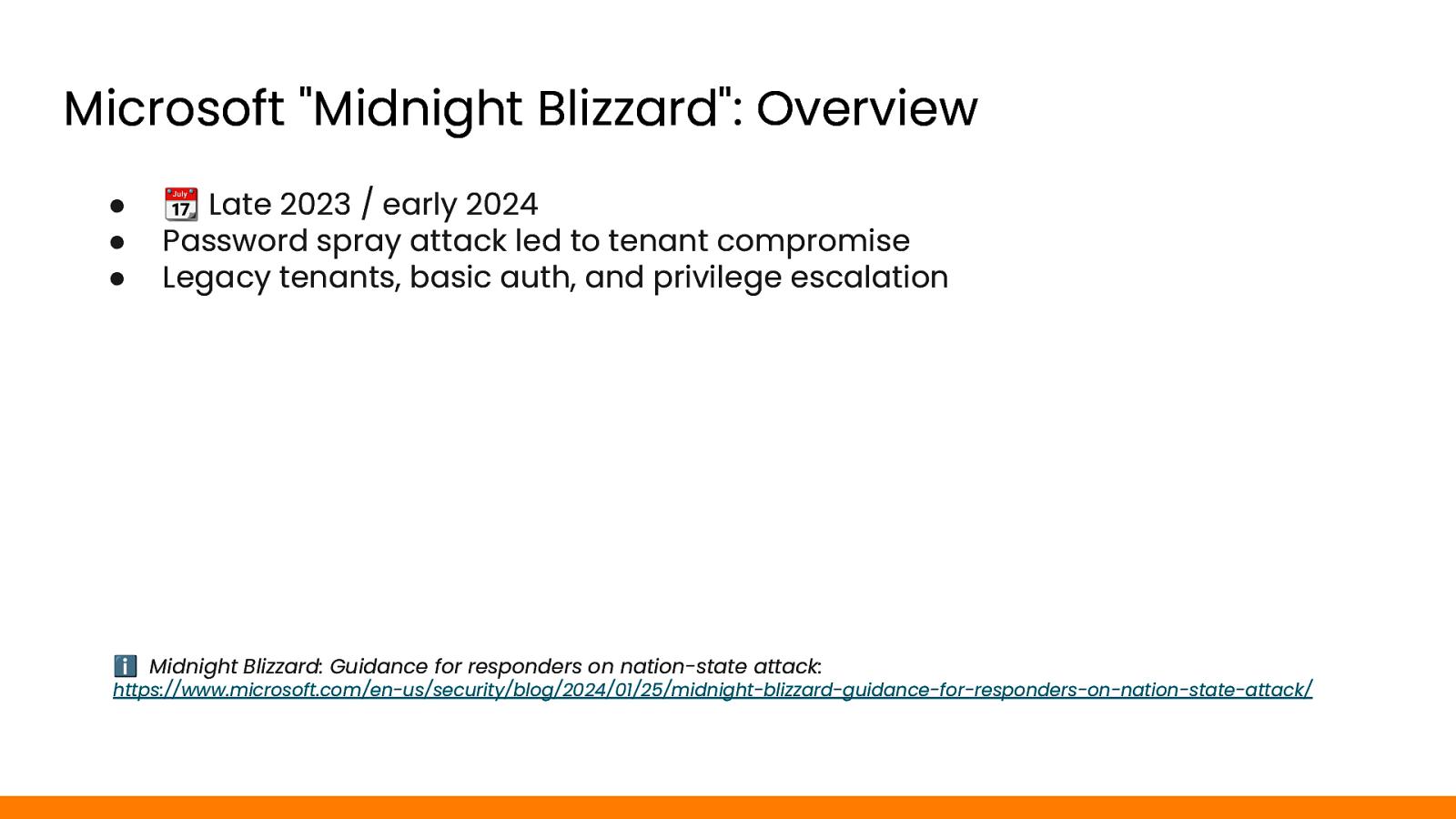
Microsoft “Midnight Blizzard”: Overview ● ● ● 📆 Late 2023 / early 2024 Password spray attack led to tenant compromise Legacy tenants, basic auth, and privilege escalation ℹ Midnight Blizzard: Guidance for responders on nation-state attack: https://www.microsoft.com/en-us/security/blog/2024/01/25/midnight-blizzard-guidance-for-responders-on-nation-state-attack/
Slide 15
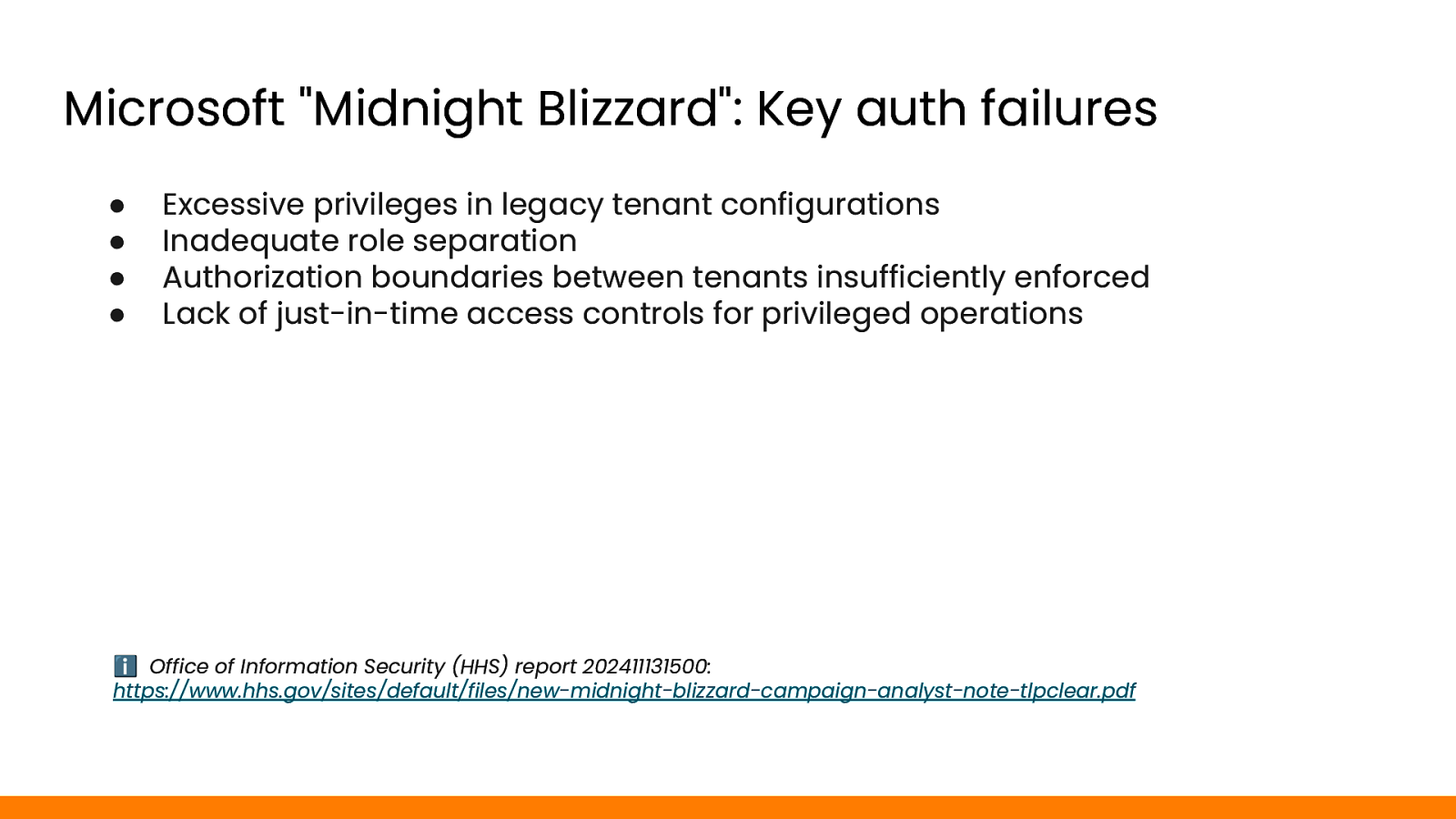
Microsoft “Midnight Blizzard”: Key auth failures ● ● ● ● Excessive privileges in legacy tenant configurations Inadequate role separation Authorization boundaries between tenants insufficiently enforced Lack of just-in-time access controls for privileged operations ℹ Office of Information Security (HHS) report 202411131500: https://www.hhs.gov/sites/default/files/new-midnight-blizzard-campaign-analyst-note-tlpclear.pdf
Slide 16

How to stop it all from going wrong
Slide 17

Token Security ● ● ● Validation best practices (signature, expiry, issuer) Secure storage and transport Avoiding common token vulnerabilities ℹ IETF RFC 8725 JSON Web Token Best Current Practices: https://datatracker.ietf.org/doc/html/rfc8725 ℹ Vaadata JWT Vulnerabilities, Common Attacks, & Best Practices: https://www.vaadata.com/blog/jwt-json-web-token-vulnerabilities-common-attacks-and-security-best-practices/
Slide 18
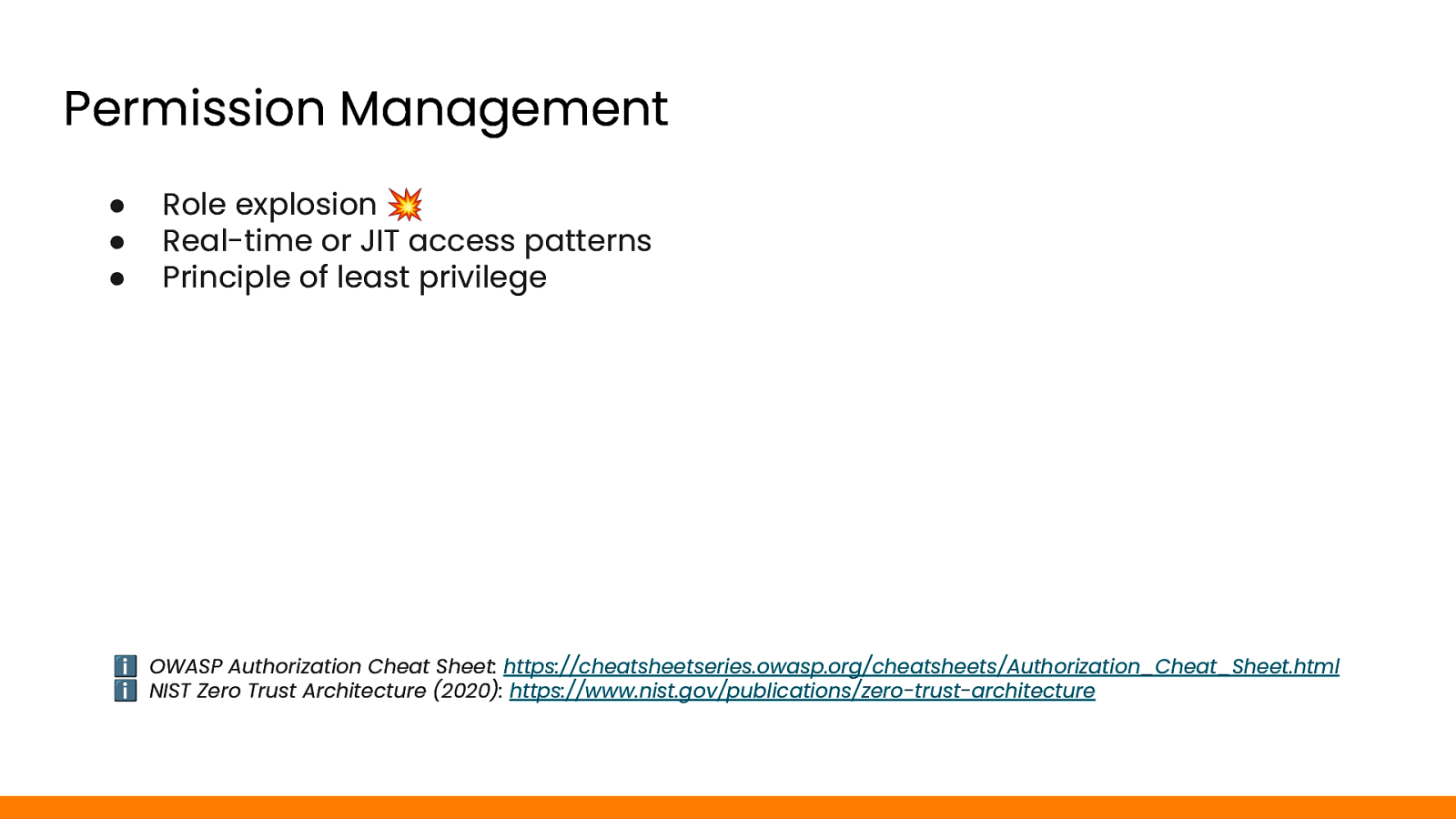
Permission Management ● ● ● Role explosion 💥 Real-time or JIT access patterns Principle of least privilege ℹ OWASP Authorization Cheat Sheet: https://cheatsheetseries.owasp.org/cheatsheets/Authorization_Cheat_Sheet.html ℹ NIST Zero Trust Architecture (2020): https://www.nist.gov/publications/zero-trust-architecture
Slide 19
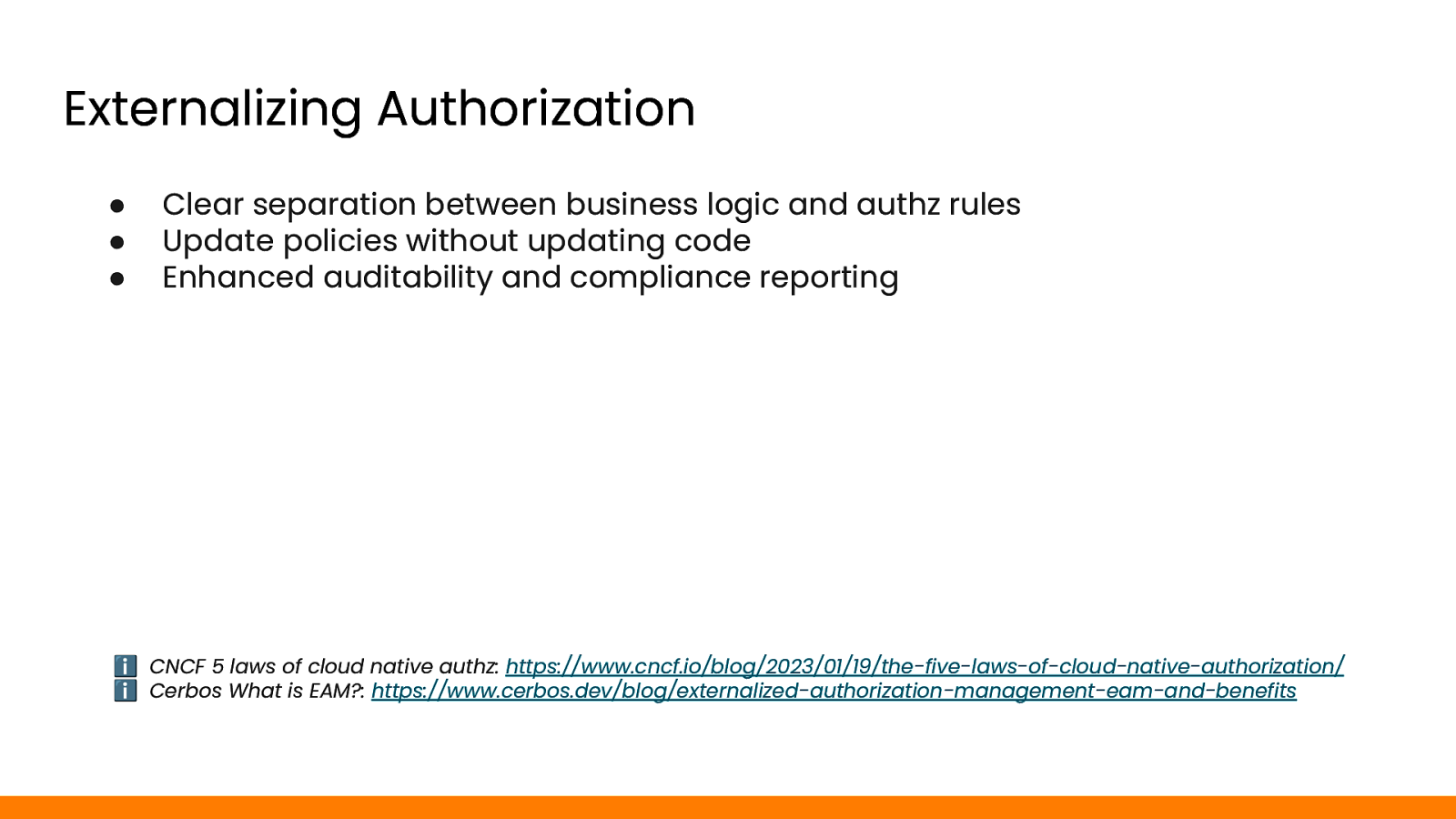
Externalizing Authorization ● ● ● Clear separation between business logic and authz rules Update policies without updating code Enhanced auditability and compliance reporting ℹ CNCF 5 laws of cloud native authz: https://www.cncf.io/blog/2023/01/19/the-five-laws-of-cloud-native-authorization/ ℹ Cerbos What is EAM?: https://www.cerbos.dev/blog/externalized-authorization-management-eam-and-benefits
Slide 20
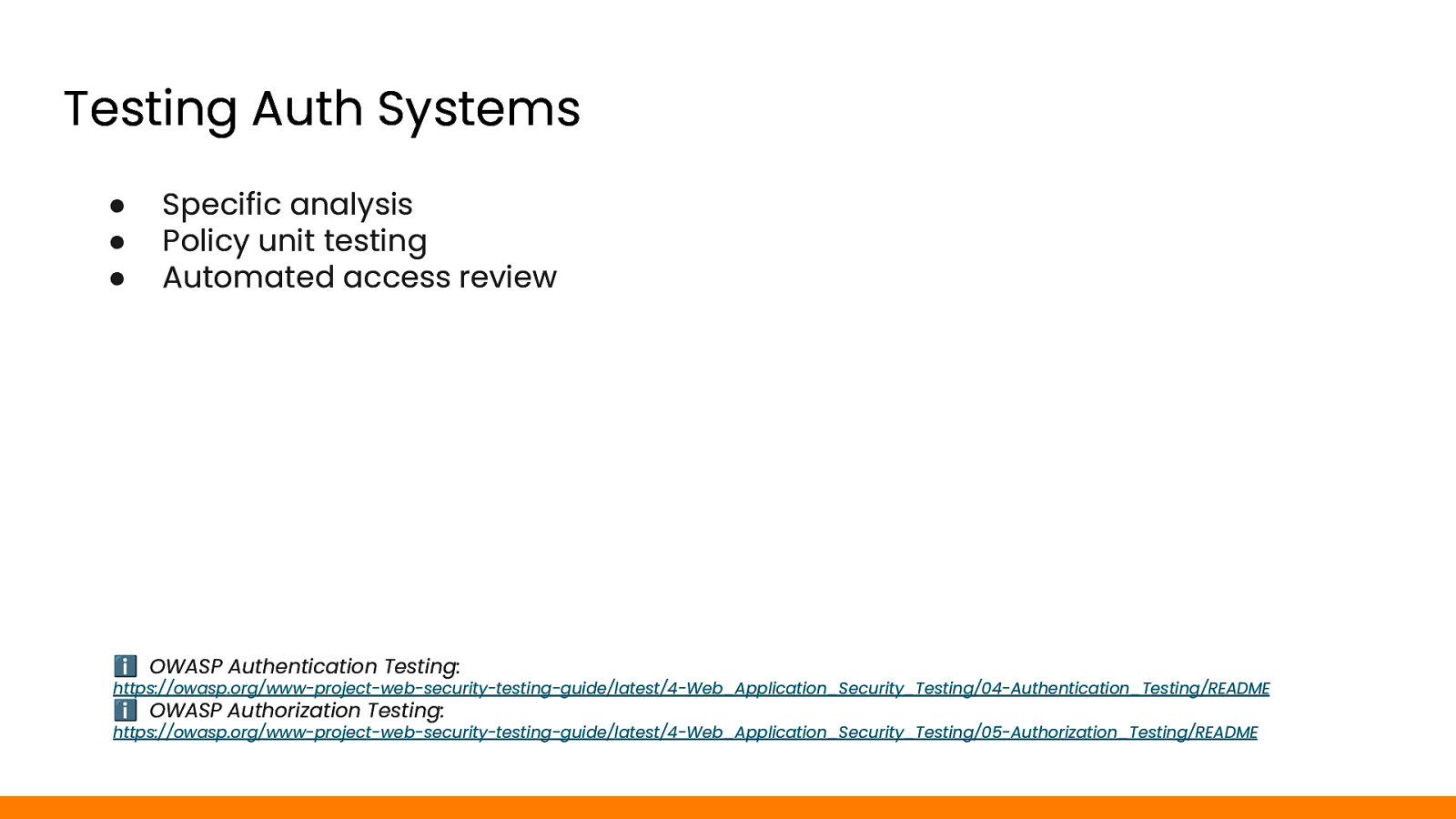
Testing Auth Systems ● ● ● Specific analysis Policy unit testing Automated access review ℹ OWASP Authentication Testing: https://owasp.org/www-project-web-security-testing-guide/latest/4-Web_Application_Security_Testing/04-Authentication_Testing/README ℹ OWASP Authorization Testing: https://owasp.org/www-project-web-security-testing-guide/latest/4-Web_Application_Security_Testing/05-Authorization_Testing/README
Slide 21

Critical Path Patterns ● ● ● High-availability authorization Graceful degradation strategies When in doubt, deny by default ℹ CNCF Cloud Native Security Whitepaper: https://www.cncf.io/wp-content/uploads/2022/06/CNCF_cloud-native-security-whitepaper-May2022-v2.pdf ℹ Netflix Edge Authentication and Token-Agnostic Identity Protection: https://netflixtechblog.com/edge-authentication-and-token-agnostic-identity-propagation-514e47e0b602
Slide 22
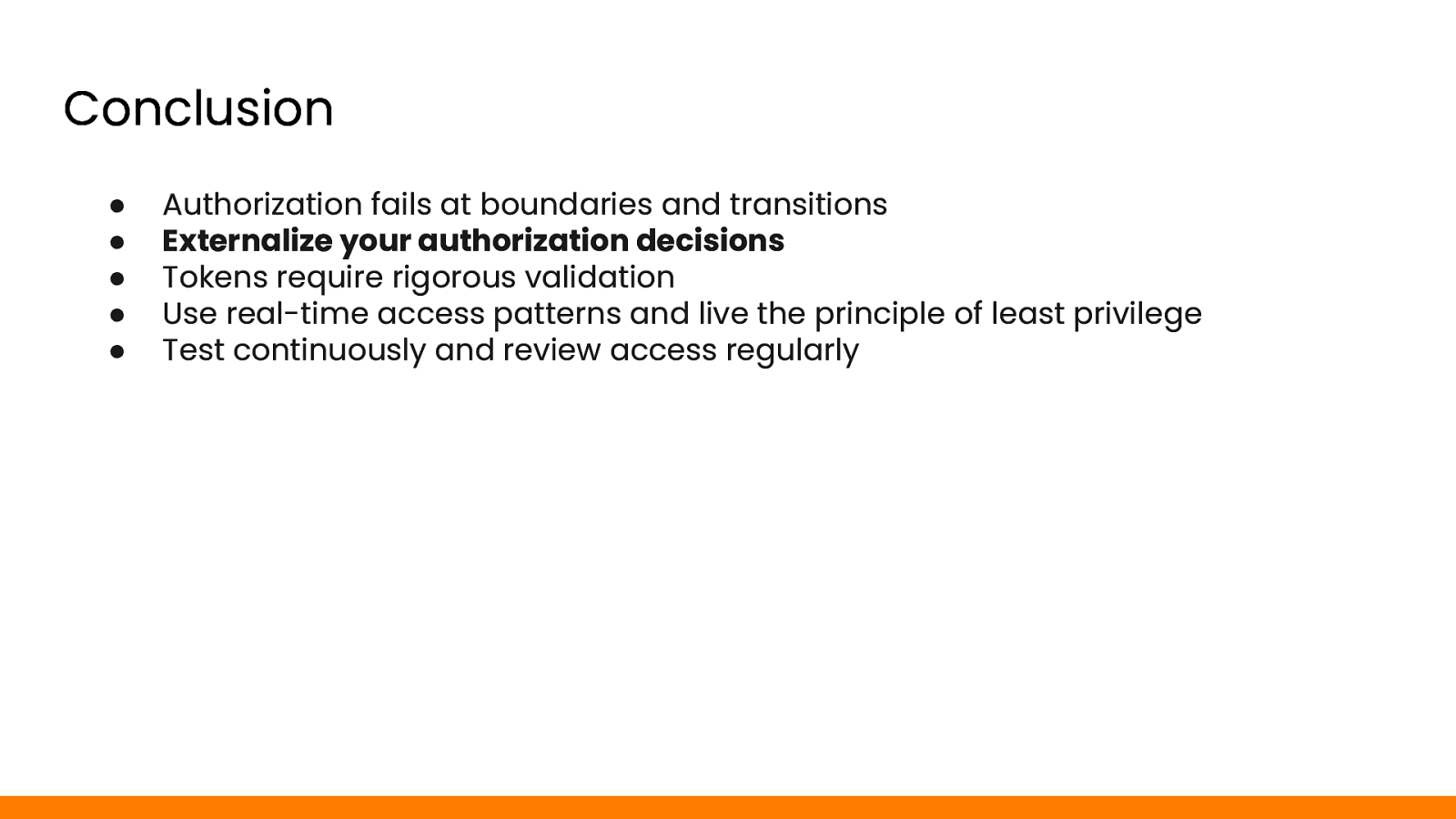
Conclusion ● ● ● ● ● Authorization fails at boundaries and transitions Externalize your authorization decisions Tokens require rigorous validation Use real-time access patterns and live the principle of least privilege Test continuously and review access regularly
Slide 23

I just met you and this is crazy but here’s my QR so Cerbos maybe?
Slide 24

Thanks!